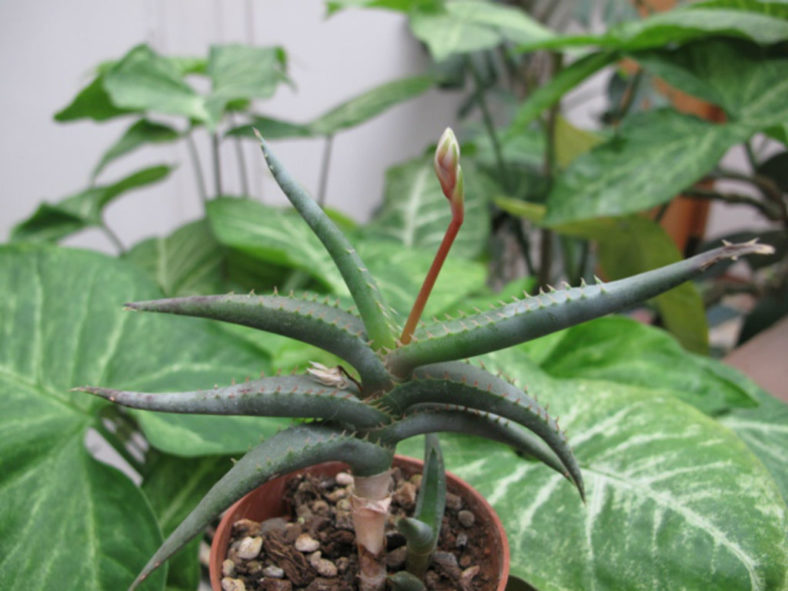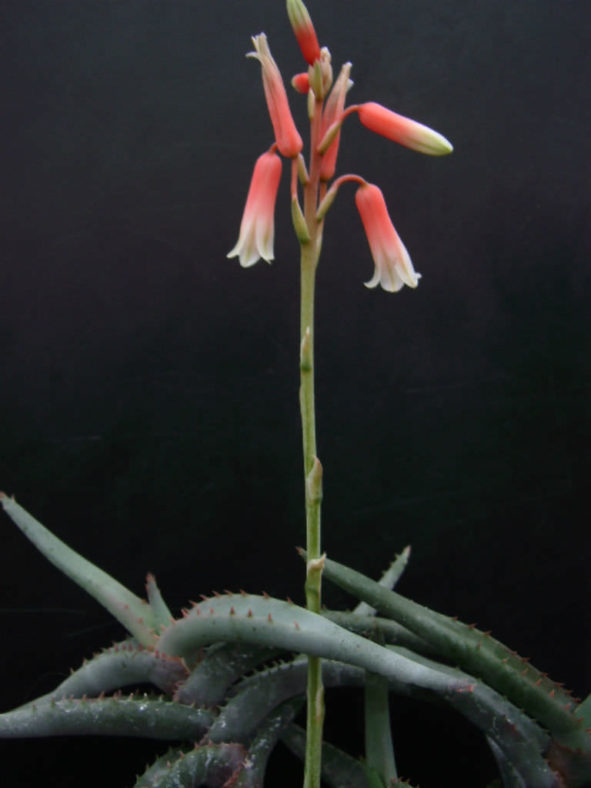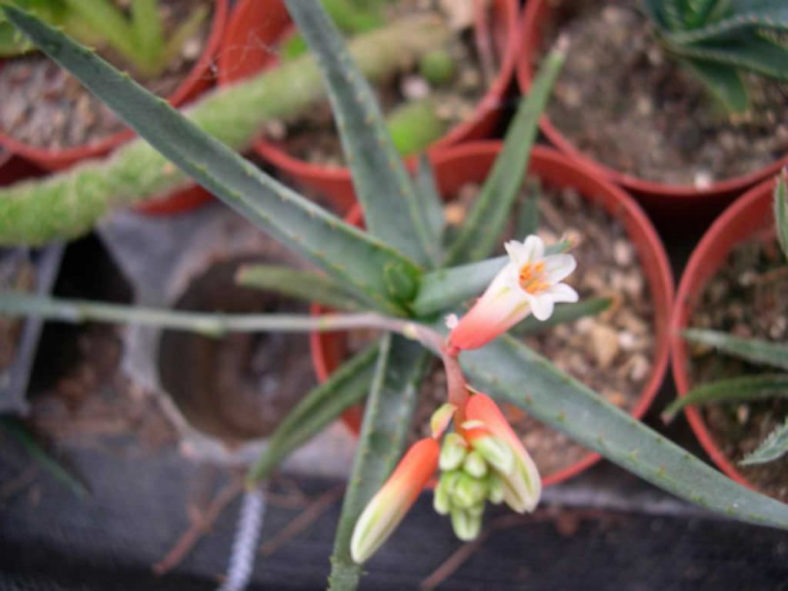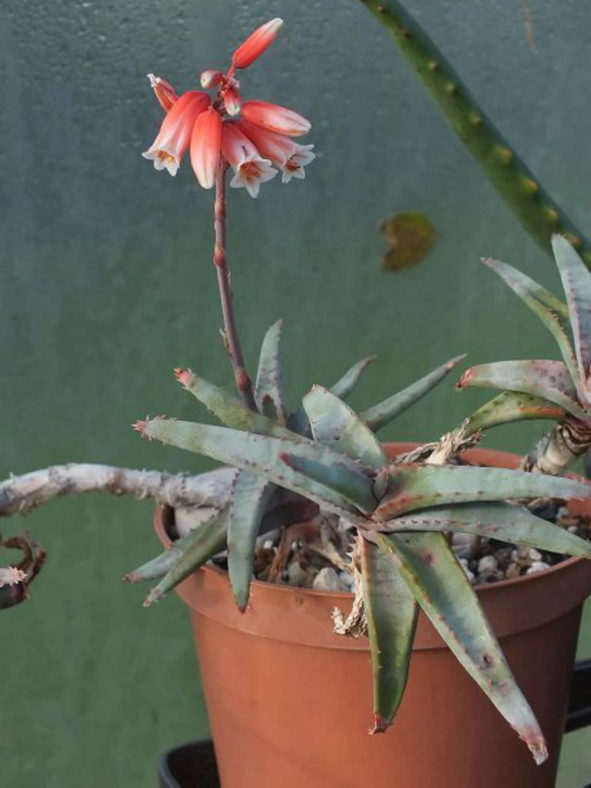Scientific Name
Aloe inexpectata Lavranos & T.A.McCoy
Scientific Classification
Family: Asphodelaceae
Subfamily: Asphodeloideae
Genus: Aloe
Etymology
The specific epithet "inexpectata (in-eks-pek-TAY-tuh)" means "unexpected" and probably refers to the surprising discovery of this species.
Origin
Aloe inexpectata is native to Madagascar.
Description
Aloe inexpectata is a small succulent with stems that hold rosettes of blue-green to grey-green leaves with reddish teeth. It grows slowly, branching at the base, and can reach up to 6 inches (15 cm) in height. The leaves tend to curl, making a nearly tubular shape. They can measure up to 2 inches (5 cm) long and up to 0.4 inches (1 cm) wide.
The flowers are tubular, red with white tips, and appear in erect, unbranched inflorescences that can grow up to 10 inches (25 cm) tall in summer and fall.

How to Grow and Care for Aloe inexpectata
Light: When growing A. inexpectata indoors, place your plant in a southern or southwest-facing window with plenty of bright, indirect light. Outdoors provide light shade, especially during the hottest parts of the day.
Soil: Plant A. inexpectata in a well-drained soil specially formulated for succulents, or make your own soil mix. Drainage is essential because too much moisture around roots can cause root rot.
Hardiness: When temperatures shift below 50 °F (10 °C), it is time to bring your Aloes inside. In the spring, move them back outside once the threat of frost has passed. A. inexpectata can withstand temperatures as low as 30 to 50 °F (-1.1 to 10 °C), USDA hardiness zones 10a to 11b.
Watering: Aloes need regular watering but are very tolerant of drought conditions for short periods. Water your A. inexpectata deeply, but only when the soil is dry. Cut back on watering during the winter months.
Fertilizing: A. inexpectata generally does not require fertilizer but may benefit from the extra nutrients. Feed with a fertilizer for cacti and other succulents in spring and summer only.
Repotting: These plants are not particularly fast-growing and will only rarely need repotting. Repot your A. inexpectata in the spring in a container a few inches larger in diameter. When roots are growing out of the drainage hole, that is a sign that it is time to repot.
Propagation: Propagating Aloe can be done by offsets, cuttings, or seeds from a mature plant. Take cuttings and remove offsets from the mother plant in late spring or early summer. For best results, sow seeds during the warm months.
Learn more at How to Grow and Care for Aloe.
Toxicity of Aloe inexpectata
A. inexpectata is not listed as toxic for people and pets.
Links
- Back to genus Aloe
- Succupedia: Browse succulents by Scientific Name, Common Name, Genus, Family, USDA Hardiness Zone, Origin, or cacti by Genus
Photo Gallery
Click on a photo to see a larger version.


